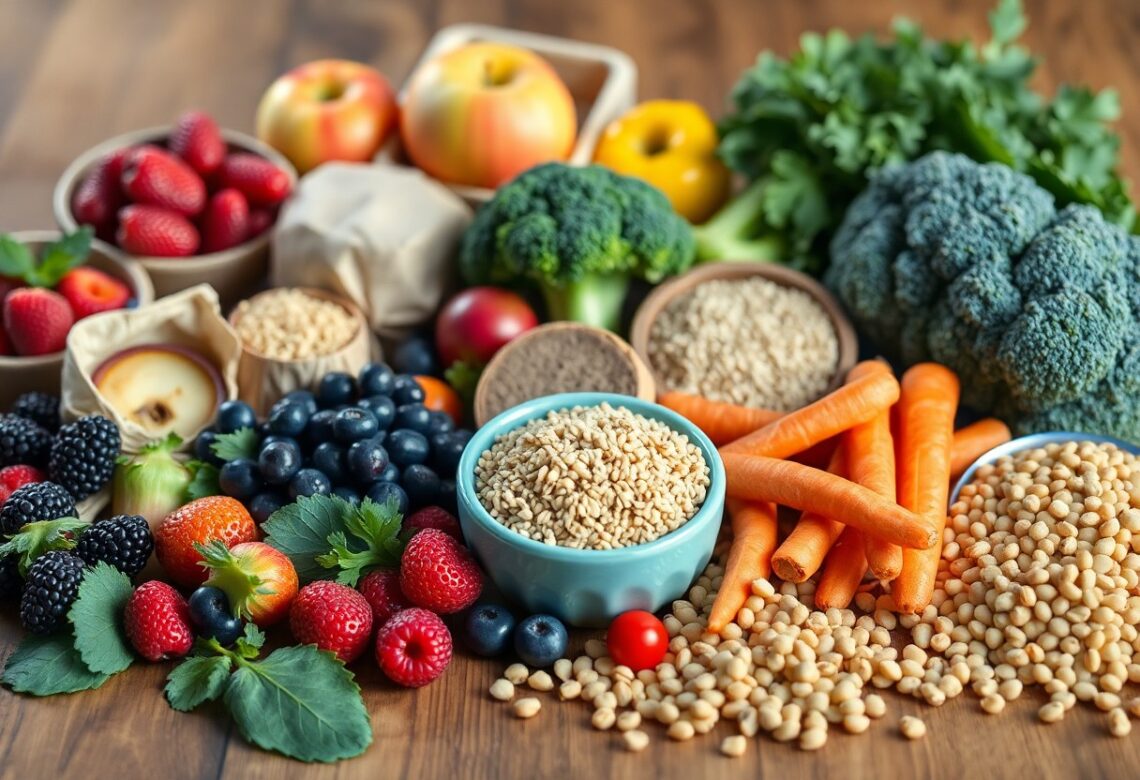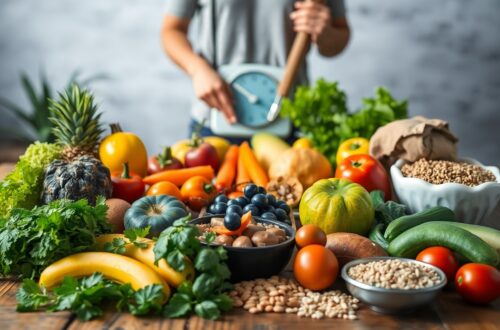Nutrition plays a significant role in your weight loss journey, and incorporating fiber-rich foods can make a real difference. These foods not only keep you feeling fuller for longer, but they also aid in digestion and regulate blood sugar levels. By prioritizing fiber in your diet, you can manage cravings more effectively and ensure your body is functioning at its best. Explore the various benefits of fiber-rich foods and consider how they can enhance your weight loss efforts.
Key Takeaways:
- Satiety: Fiber-rich foods promote a feeling of fullness, reducing overall calorie intake.
- Digestive Health: They support digestive health by preventing constipation and promoting regular bowel movements.
- Slow Digestion: Fiber slows down the digestion process, leading to more stable blood sugar levels.
- Nutrient Density: Many fiber-rich foods are also high in important vitamins and minerals, enhancing overall nutrition.
- Weight Management: Incorporating fiber into your diet can help with long-term weight management.
- Low-Calorie Options: Most fiber sources are low in calories, making it easier to consume larger portions without overeating.
- Variety of Sources: Fiber can be found in numerous foods, including fruits, vegetables, whole grains, and legumes, offering diverse options for inclusion in meals.
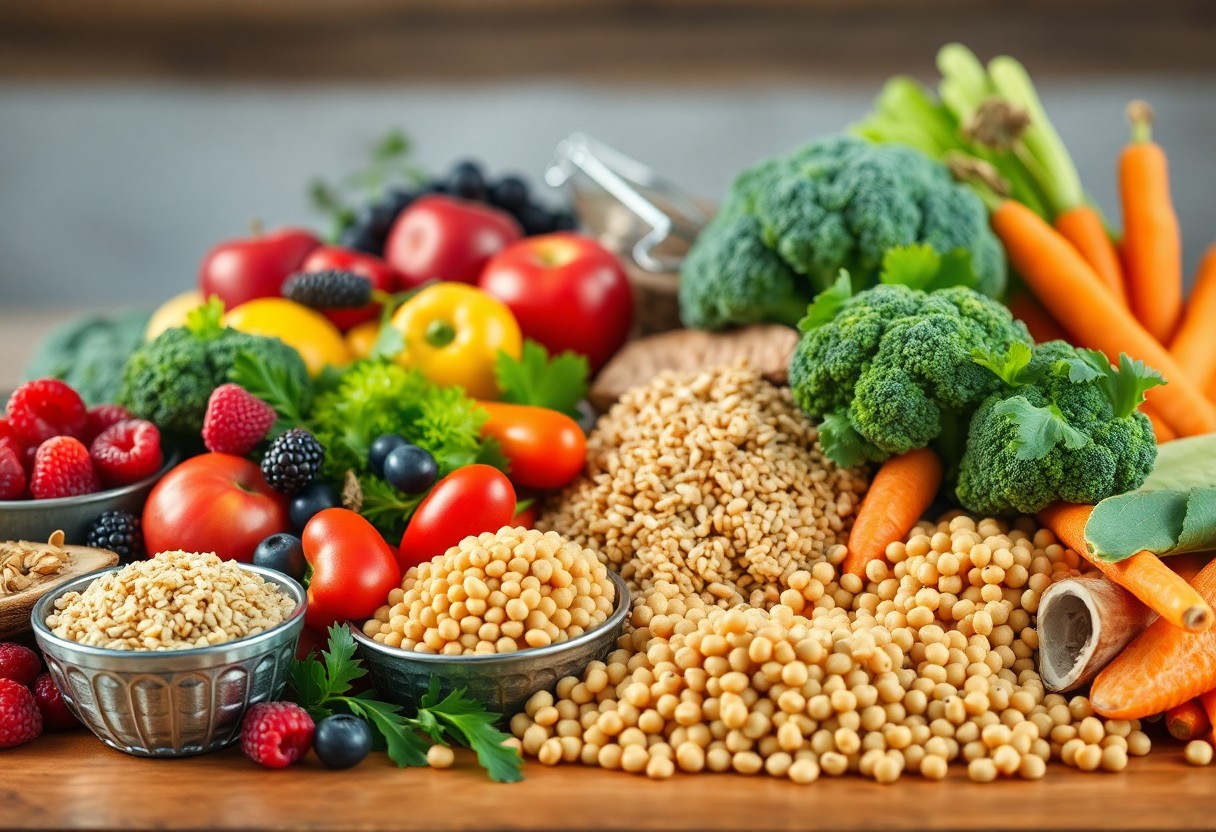
The Role of Fiber in the Diet
Your diet plays an important role in weight management, and fiber is a key component. Fiber helps create a feeling of fullness, which can prevent overeating and facilitate weight loss. By incorporating fiber-rich foods into your meals, you can slow down digestion and improve your overall gut health, making it easier to maintain a healthy weight.
Understanding Dietary Fiber
After learning about the benefits of fiber, it’s important to understand what dietary fiber is. Dietary fiber refers to the indigestible parts of plant foods that pass through the digestive system intact. It is classified into two main categories: soluble and insoluble fiber, both playing different roles in supporting your health.
Types of Fiber and Their Benefits
On understanding the types of dietary fiber, you can appreciate their distinct benefits:
| Type of Fiber | Benefit |
|---|---|
| Soluble Fiber | Helps lower cholesterol and regulates blood sugar levels. |
| Insoluble Fiber | Aids in digestion by promoting regular bowel movements. |
| Prebiotic Fiber | Supports the growth of beneficial gut bacteria. |
| Fermentable Fiber | Improves gut health and may enhance immune function. |
| Functional Fiber | Added to foods for specific health benefits, enhancing overall fiber intake. |
- Each type of fiber plays a unique role, and it’s beneficial to include a variety in your diet.
Benefits of fiber aren’t just limited to digestion; they extend to various aspects of health as well. Fiber can help with weight loss by increasing satiety and reducing calorie intake. Furthermore, it contributes to heart health by lowering cholesterol levels and managing blood sugar levels. Incorporating diverse fiber sources is key:
| Source of Fiber | Health Benefit |
|---|---|
| Fruits | Rich in vitamins and antioxidants while providing both soluble and insoluble fiber. |
| Vegetables | High in water content and low in calories, aiding in weight management. |
| Whole Grains | Excellent source of energy and important nutrients. |
| Legumes | Protein-rich while providing a substantial amount of fiber. |
| Nuts and Seeds | Healthy fats combined with fiber for weight control and heart health. |
- Assume that balancing these fiber sources can lead to better health outcomes.
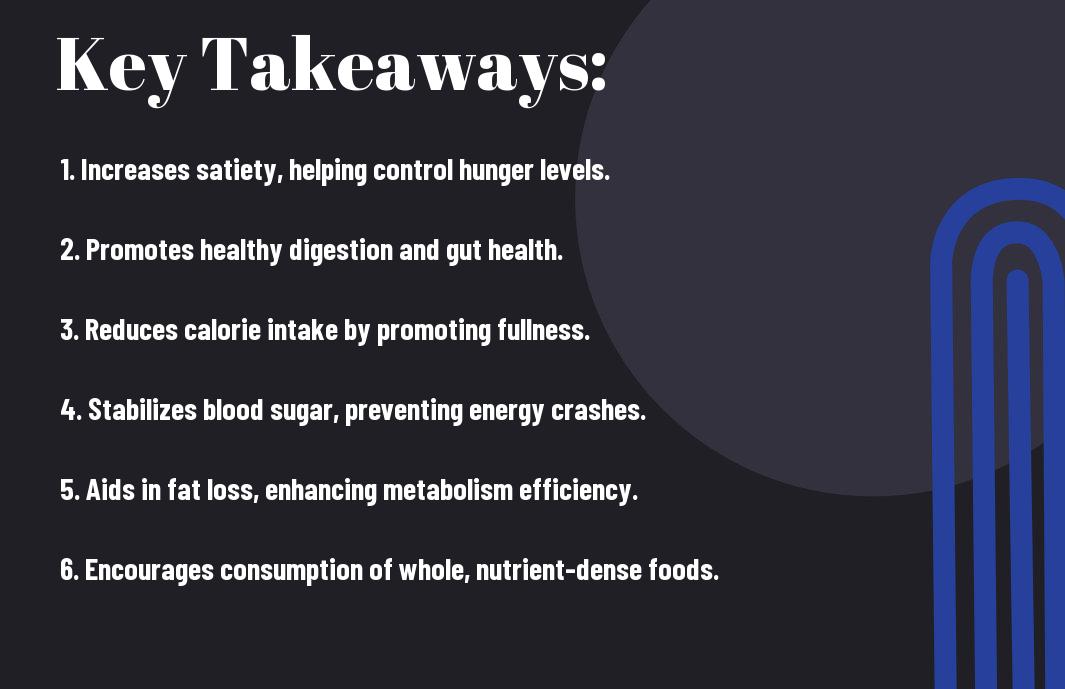
How Fiber Aids in Weight Loss
The incorporation of fiber-rich foods in your diet plays a significant role in weight loss. Fiber can help you feel fuller for longer periods, reducing the likelihood of overeating and snacking on unhealthy options. Additionally, high-fiber foods are often low in calories, allowing you to enjoy generous portions without overwhelming your daily caloric intake. By making fiber a staple in your meals, you can effectively aid your weight loss efforts while improving overall health.
Increased Satiety and Reduced Appetite
Around 90% of adults struggle with controlling their appetite, making fiber an imperative tool for your weight loss journey. High-fiber foods are more filling, meaning you’re less likely to consume extra calories. This increased satiety can be a game-changer, helping you stick to your dietary goals and maintain a healthy eating pattern while enjoying your meals.
Slower Digestion and Blood Sugar Control
On the other hand, fiber helps to slow down the digestion process, which can stabilize blood sugar levels and prevent spikes that lead to cravings. By keeping your blood sugar steady, you can better manage your energy levels and reduce feelings of fatigue and irritability, ensuring you stay motivated to achieve your weight loss goals.
A high-fiber diet not only regulates your appetite but also promotes slower digestion, which is vital for maintaining consistent blood sugar levels. When you consume fiber, it forms a gel-like substance in your digestive tract, slowing the absorption of sugars into your bloodstream. This steady release of energy means you won’t experience the sudden highs and lows associated with rapid sugar spikes, which can lead to cravings. By prioritizing fiber-rich foods, you empower yourself with better control over your hunger and energy, making weight loss more sustainable.
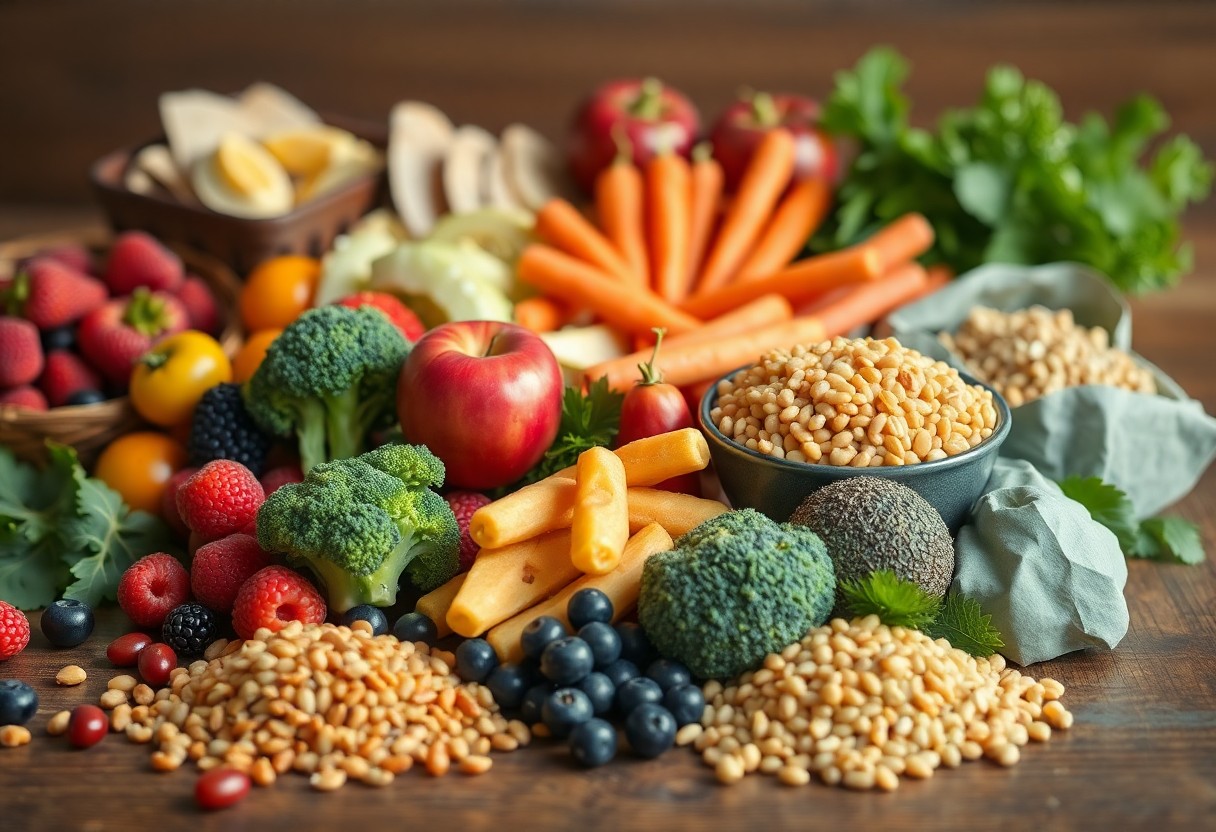
Best Fiber-Rich Foods for Weight Loss
Not all foods are created equal when it comes to fiber content. To maximize your weight loss efforts, consider incorporating a variety of fiber-rich foods into your diet. Foods such as fruits, vegetables, whole grains, and legumes not only keep you full longer but also contribute to overall health. For more insights on Benefits Of Fiber-Rich Foods For Weight Loss, explore how these options can be game-changers in your weight management journey.
Fruits and Vegetables
Best sources of fiber include a vibrant array of fruits and vegetables. Incorporating options like apples, berries, carrots, and broccoli into your meals will help you feel satiated while providing imperative nutrients. These foods are naturally low in calories and high in fiber, making them perfect for your weight loss plan.
Whole Grains and Legumes
FiberRich whole grains and legumes are fantastic options that can help you maintain a healthy weight. Foods like quinoa, brown rice, lentils, and black beans not only pack a significant fiber punch but also offer protein and other vital nutrients. These foods promote satiety and can help curb cravings, making it easier for you to stick to your weight loss goals.
The benefits of incorporating whole grains and legumes into your meals go beyond just fiber content. They help stabilize blood sugar levels, which can reduce hunger pangs and keep your energy steady throughout the day. With a variety of recipes and cooking methods available, you can easily add these nutrient-dense foods to your diet, enhancing both flavor and health benefits.
Incorporating Fiber into Your Diet
All forms of fiber can be easily integrated into your daily meals. Start your mornings with oatmeal, add beans to salads, or snack on fresh fruits and vegetables throughout the day. Substituting white bread and pasta with whole grain versions can significantly boost your fiber intake. Always aim to gradually increase your fiber consumption to give your digestive system time to adjust.
Tips for Increasing Fiber Intake
Diet is a pivotal aspect of enhancing your fiber consumption. Here are some effective strategies:
- Opt for whole grains over refined grains.
- Include legumes like lentils, beans, and peas in meals.
- Snack on fresh fruits or raw vegetables.
- Incorporate fiber-rich foods into soups and stews.
- Read labels to compare fiber content in packaged foods.
Perceiving the benefits of these small changes can lead to significant weight loss outcomes.
Meal Planning for Fiber-Rich Diets
On your journey to a fiber-rich diet, meal planning becomes vital. By preparing your meals in advance, you can ensure that high-fiber foods are readily available, reducing the temptation to grab quick, low-fiber options. Focus on including a variety of fiber sources in each meal, such as whole grains, fruits, vegetables, and legumes. Consider creating a weekly menu that highlights diverse dishes, ensuring you enjoy your meals while meeting your dietary goals.
Consequently, effective meal planning enables you to maintain a balanced, fiber-rich diet. By dedicating a little time each week to plan your meals, you can make informed choices that prioritize your health. Aim to include at least one source of fiber in every meal and snack, allowing you to enjoy a satisfying, nutrient-dense diet that keeps you on track with your weight loss journey.
Common Myths About Fiber and Weight Loss
Keep in mind that there are several misconceptions surrounding fiber and its role in weight loss. Some believe that simply adding fiber-rich foods to their diet will result in immediate weight loss, neglecting the importance of maintaining a calorie deficit. Others think that all fibers are created equal; however, soluble and insoluble fibers serve different purposes in your body. For a deeper understanding of how fiber supports your weight loss journey, check out this resource on Dietary fiber: Essential for a healthy diet.
Misconceptions About Fiber Supplements
Among the common myths is the belief that fiber supplements can replace the need for fiber-rich foods. While supplements can help boost your fiber intake, they lack the vitamins, minerals, and health benefits found in whole foods. Whole sources of fiber, such as fruits, vegetables, and whole grains, are often more effective for weight loss.
Addressing Concerns Around Fiber Intake
Addressing concerns about fiber intake can help you navigate your dietary choices. Some worry that increasing fiber too quickly may lead to digestive discomfort, but gradual increases and proper hydration can mitigate these effects. It’s imperative to listen to your body and adjust your fiber intake accordingly.
Considering the overall benefits of a fiber-rich diet, the key is to introduce fiber gradually and monitor how your body responds. Aim to incorporate a variety of fiber sources while staying hydrated to promote digestive health and comfort. This way, you can enjoy the benefits of fiber without experiencing adverse effects, making your weight loss journey more effective and enjoyable.
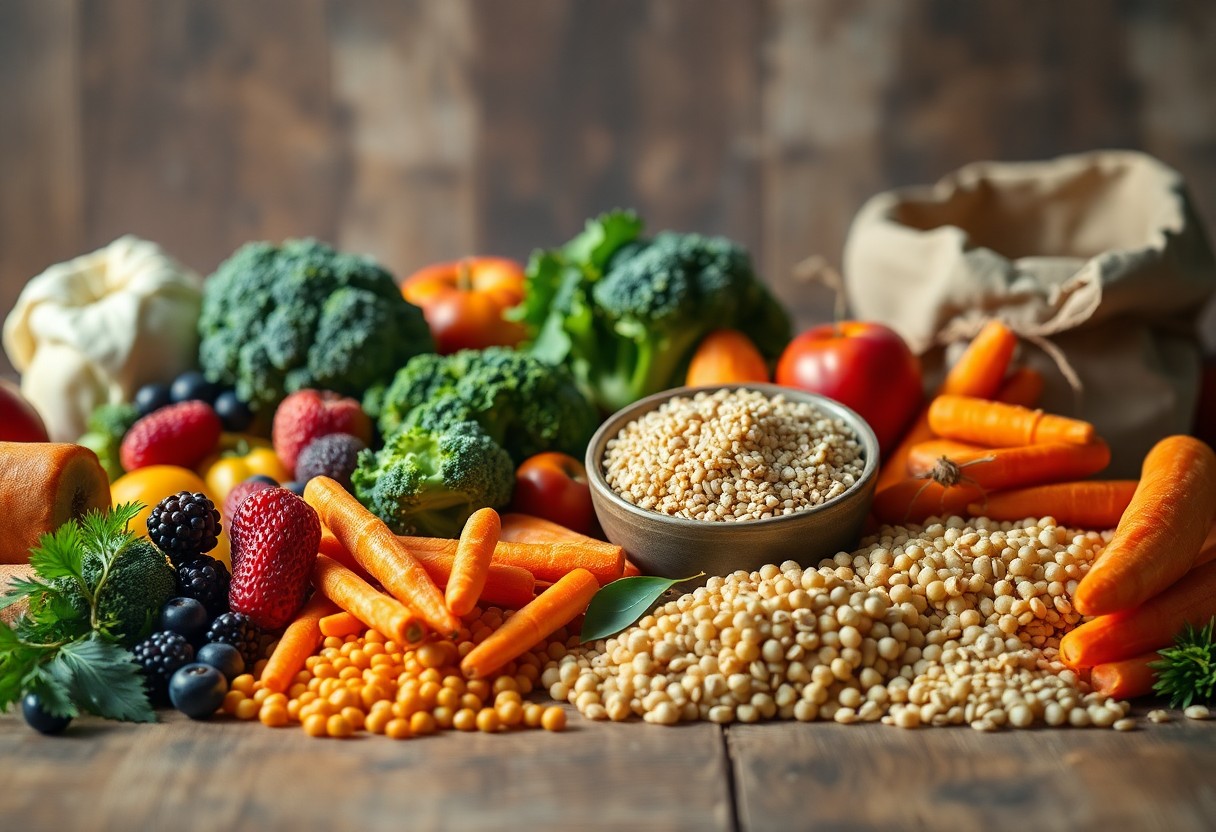
Recommendations and Guidelines
Once again, incorporating fiber-rich foods into your diet can greatly assist in your weight loss journey. It’s imperative to focus on whole, minimally processed sources of fiber such as fruits, vegetables, whole grains, legumes, and nuts. Aim to gradually increase your fiber intake to prevent digestive discomfort, and consider keeping a food diary to track both your fiber consumption and overall progress.
Daily Fiber Intake Recommendations
Among adults, the general recommendation is to aim for 25-30 grams of fiber per day. However, individual needs may vary based on factors such as age, sex, and level of physical activity. By prioritizing fiber in your meals, you’ll not only support weight loss but also improve your overall health.
Balancing Fiber with Other Nutrients
Around 14 grams of fiber should be included for every 1,000 calories you consume, ensuring you maintain a balanced diet. This balance is important to support various bodily functions and improve your overall well-being.
In addition to this balance, make sure to pair fiber with adequate amounts of protein and healthy fats in your meals. Including these nutrients will enhance satiety and help maintain energy levels throughout the day. For example, add nuts to your morning oatmeal or pair beans with a lean protein source at lunch. Striving for a variety of food sources will not only keep your meals enjoyable but also ensure you are getting a well-rounded nutrient profile to support your weight loss goals.
Summing up
Presently, incorporating fiber-rich foods into your diet can significantly enhance your weight loss journey. These foods not only keep you feeling full longer, reducing the urge to snack, but they also help regulate your digestion and maintain stable blood sugar levels. By prioritizing fruits, vegetables, whole grains, and legumes, you can create satisfying meals that support your health goals while promoting a balanced diet. Embracing fiber can lead to sustainable weight management and improved overall well-being.
FAQ: Benefits of Fiber-Rich Foods for Weight Loss
Q: What are fiber-rich foods?
A: Fiber-rich foods include fruits, vegetables, whole grains, legumes, nuts, and seeds. These foods are high in dietary fiber, which is important for digestive health and can aid in weight loss efforts.
Q: How does fiber help with weight loss?
A: Fiber helps with weight loss by promoting satiety, meaning it keeps you feeling full for longer. This can reduce overall calorie intake. Additionally, fiber slows down the digestion process, which helps regulate blood sugar levels and reduce cravings.
Q: Can you give examples of high-fiber foods?
A: Yes, some examples of high-fiber foods include oatmeal, chia seeds, lentils, pears, avocados, brown rice, broccoli, and black beans. Incorporating these foods into your diet can help increase your fiber intake.
Q: How much fiber should I consume daily for weight loss?
A: The recommended daily intake of fiber is about 25 grams for women and 38 grams for men. However, for effective weight loss, aiming for a higher intake may be beneficial, depending on individual dietary needs and goals.
Q: Are there any side effects of consuming too much fiber?
A: Consuming too much fiber too quickly can lead to digestive discomfort, including bloating and gas. It’s best to increase fiber intake gradually and to ensure sufficient hydration to help manage these side effects.
Q: Will fiber alone lead to weight loss?
A: While fiber is beneficial for weight loss, it should be part of a balanced diet that includes a variety of nutrients. Pairing high-fiber foods with regular physical activity and a caloric deficit will enhance weight loss results.
Q: How can I incorporate more fiber into my meals?
A: You can easily increase your fiber intake by adding whole foods to your meals, such as choosing whole grain bread over white, snacking on fruits and nuts, or adding beans or lentils to salads and soups. Additionally, consider starting your day with fiber-rich breakfasts like oatmeal or smoothies packed with fruits and vegetables.
